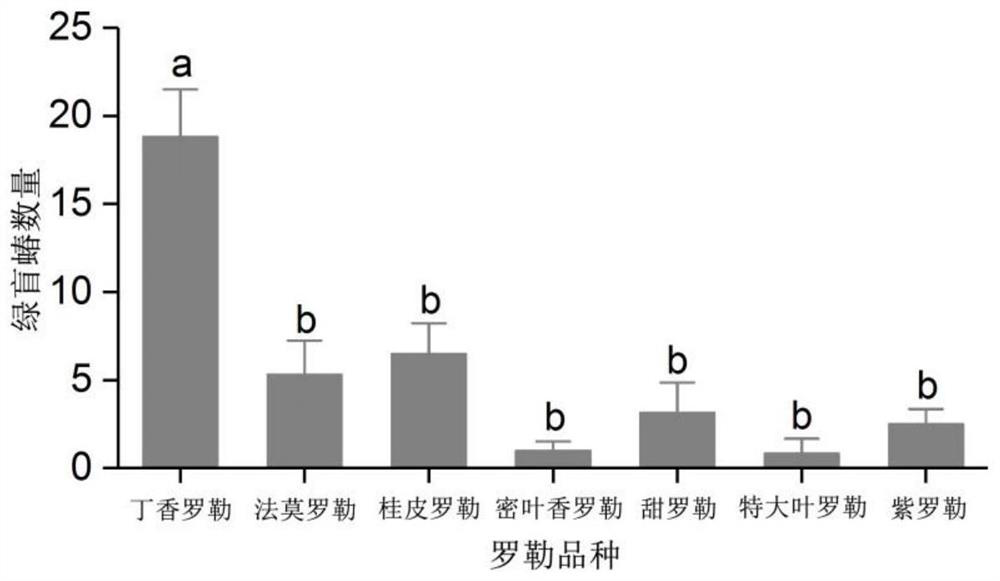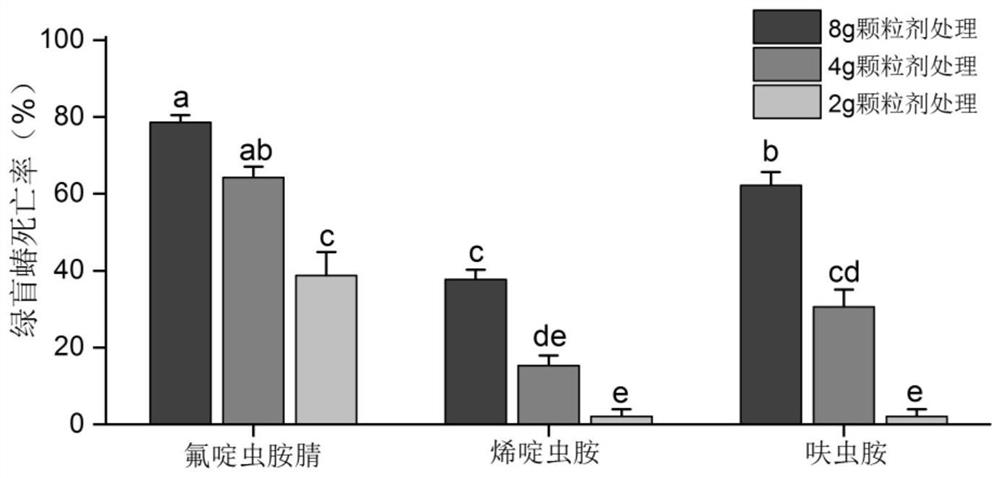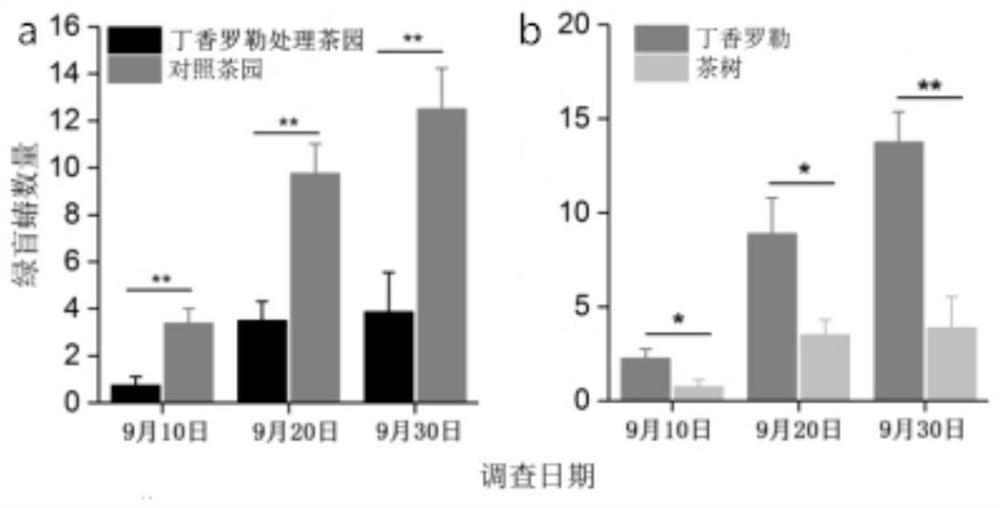A kind of method for efficiently trapping and killing Lygus spp. in tea garden
A technology of Lygus chinensis and tea gardens, applied in the field of biological control of field pests, can solve the problems of short duration, small effect, and difficult control, and achieve the effect of reducing population density, reducing control costs, and long flowering period of basil
- Summary
- Abstract
- Description
- Claims
- Application Information
AI Technical Summary
Problems solved by technology
Method used
Image
Examples
Embodiment 1
[0043] A method for efficiently trapping and killing Lygus spp. in tea gardens, burying basil seeds and systemic insecticidal granules against Lygus spp. around the tea garden or between tea rows, the seeding amount is 30-60 holes / mu, and the hole spacing is 1-2m; after planting, water enough water, through cultivation and management, the adult basil plants will bloom in September-October of the year, and use the trapping function of basil inflorescences to trap and kill the green Lygus bug; wherein, each hole is aimed at the inner plant of the green Lygus bug. Inhalation insecticidal granules ≥ 2g.
[0044] The systemic insecticidal granule for the green Lygus bug is sulfoxaflor granule.
[0045] The described systemic insecticidal granules against Lygus chlorophylla are prepared from the following components by weight fraction:
[0046] 20% of systemic insecticide, 3-5% of white carbon black, 5-10% of light calcium carbonate, 1-3% of polyvinyl alcohol, 1% of anhydrous sodiu...
Embodiment 2
[0050] A basil cultivation tank for efficiently trapping and killing the green Lygus bug. The basil cultivation tank is filled with basil growth substrate, medicament-treated clove basil seeds and sulfoxaflor granules in the packaging tank, and then seals the tank mouth with aluminum foil. Finally, it is vacuum-packed; the packaging tank of the cultivation tank is formed by pressing straw; specifically, it is a cylindrical cultivation packaging tank with a bottom containing 85% straw components; specifications: height 18cm, bottom diameter 12cm; bottom and There are seepage holes on the tank wall;
[0051] The filling method of the above-mentioned basil cultivation tank for trapping and killing green Lygus is as follows: fill 600-800 g of basil growth substrate into the straw packaging tank, place 0.2 g of medicament treatment clove basil seeds and 8 g of sulfonicamid at a distance of 2 cm from the tank mouth Nitrile granules, sealed with aluminum foil and vacuum-packed.
[0...
Embodiment 3
[0059] The trapping and killing method of the green Lygus bug in the tea garden, the basil cultivation pot of embodiment 2 is buried in the periphery of the tea garden or between the tea rows, the seeding amount is 30-60 pots / mu, and the pot spacing is 1-2m; when planting, remove the plastic film Pack it, remove the aluminum foil cover, make the mouth of the basil cultivation tank level with the ground, pour 1L of water into each tank, no fertilizer and water management is required throughout the growing season, and weed 1-2 times during the basil seedling stage.
[0060] 1. The trapping effect of different basil varieties on Lygus japonica in tea garden
[0061] Straw pressing cylindrical cultivation tank (specification: height 18cm, bottom diameter 12cm) filled with 800g basil growth substrate (6 parts of peat, 3 parts of perlite, 1 part of flower fertilizer controlled release fertilizer granule, water content ≤ 5%), at a distance Place 0.2g medicament to process the basil s...
PUM
 Login to View More
Login to View More Abstract
Description
Claims
Application Information
 Login to View More
Login to View More - R&D
- Intellectual Property
- Life Sciences
- Materials
- Tech Scout
- Unparalleled Data Quality
- Higher Quality Content
- 60% Fewer Hallucinations
Browse by: Latest US Patents, China's latest patents, Technical Efficacy Thesaurus, Application Domain, Technology Topic, Popular Technical Reports.
© 2025 PatSnap. All rights reserved.Legal|Privacy policy|Modern Slavery Act Transparency Statement|Sitemap|About US| Contact US: help@patsnap.com



